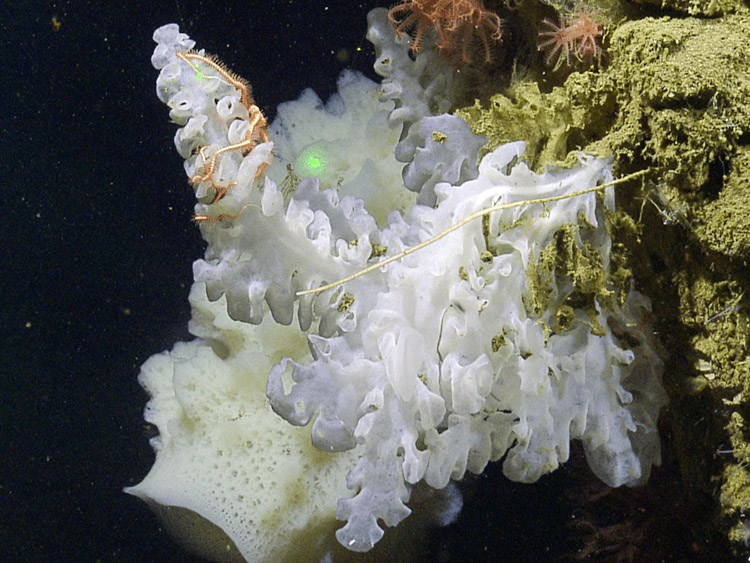Last updated: August 27, 2020
Article
Scientists Discover New Species of Deep-sea Sponge in Cordell Bank National Marine Sanctuary

NOAA
July 2020 - Dozens of deep-sea sponges thrive off the California coast, but many are still unknown to science. Scientists recently described a new species of deep-sea sponge in Cordell Bank National Marine Sanctuary (CBNMS), located just northwest of Point Reyes National Seashore.
The white ruffled sponge is named Farrea cordelli for its discovery in the 1,286 square mile sanctuary. CBNMS protects and preserves the extraordinary marine ecosystem surrounding Cordell Bank, on the edge of the continental shelf. It provides a home to colorful and abundant invertebrates, algae, and fishes.
Scientists aboard the Exploration Vessel Nautilus used a remotely operated vehicle to collect a portion of the white sponge during an expedition in the fall of 2017. Dr. Henry Reiswig, a sponge expert with the Royal British Columbia Museum described this new species. He studied it using a scanning electron microscope to look at the skeletal structure of the sponges. Sponges can be challenging to identify by photos alone. They must be studied under the microscope to confirm species.
Sponges attach to rocks and filter the water for detritus and plankton that rains down from surface waters. They also provide habitat for other animals living in the deep. The E/V Nautilus scientists collected the specimen of the new species in Box Canyon at a depth of nearly 7,000 feet. In addition to the new species of sponge, other sponge collections on the same cruise revealed range and depth extensions. The scientists published their findings in Zootaxa, a peer reviewed journal.
Globally, we have a lot to learn about deep sea sponges in terms of their ecological function, as well as for medical use. Some species have properties that aid in medical treatment of human diseases. Understanding deep sea communities in national marine sanctuaries is also a critical step in protecting sensitive ocean ecosystems. The technology to reach such deeper areas of the ocean continues to improve. As it does, new opportunities are emerging for scientists to learn more about deep sea environments in CBNMS, and beyond.
For more information
-
Full CBNMS news article by Jennifer Stock: New species of sponge discovered in Cordell Bank National Marine Sanctuary
-
Contact Jennifer Stock, Education and Outreach Coordinator, NOAA/Cordell Bank National Marine Sanctuary
